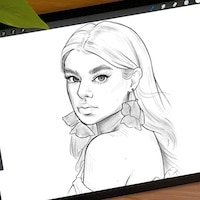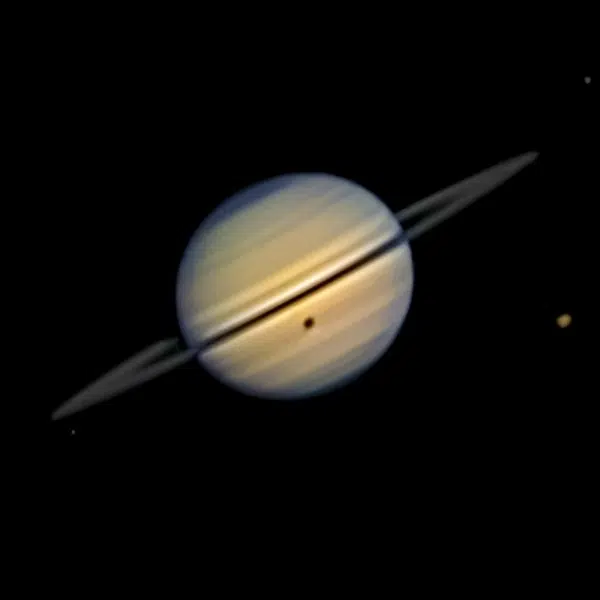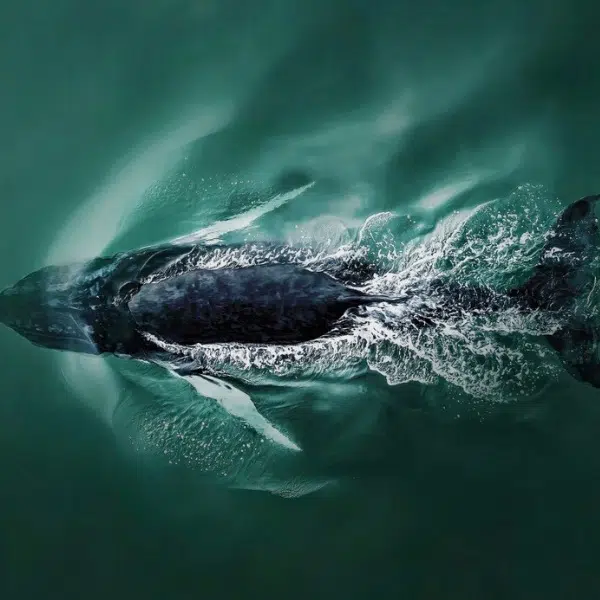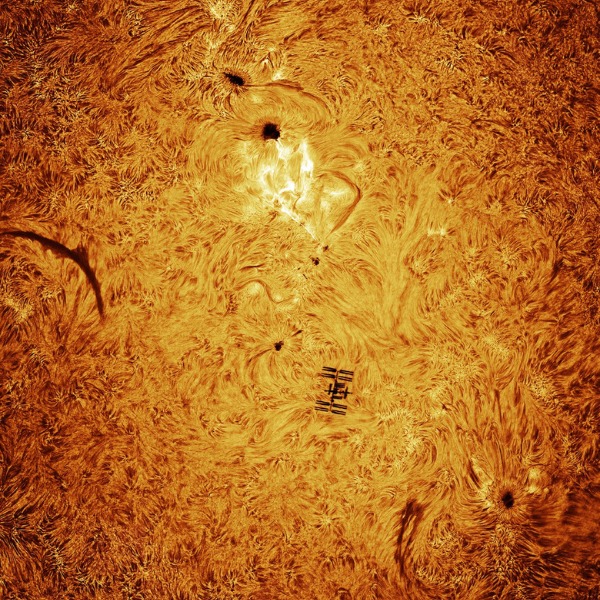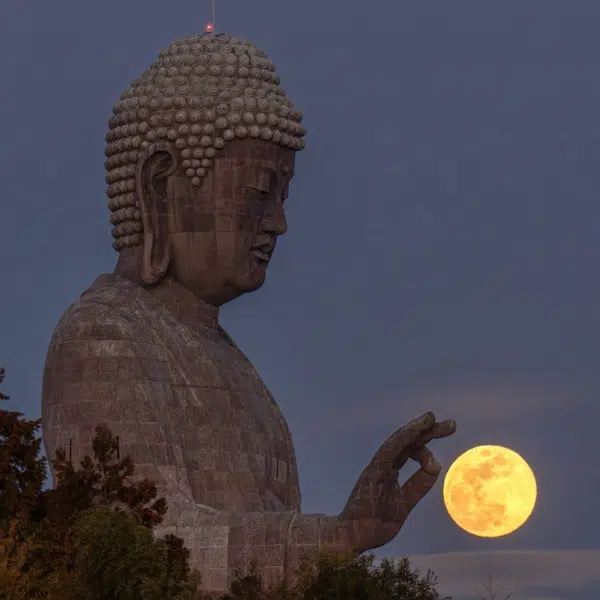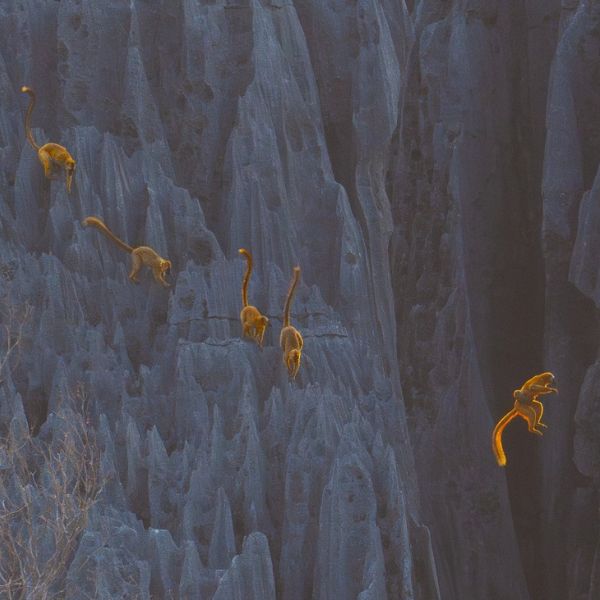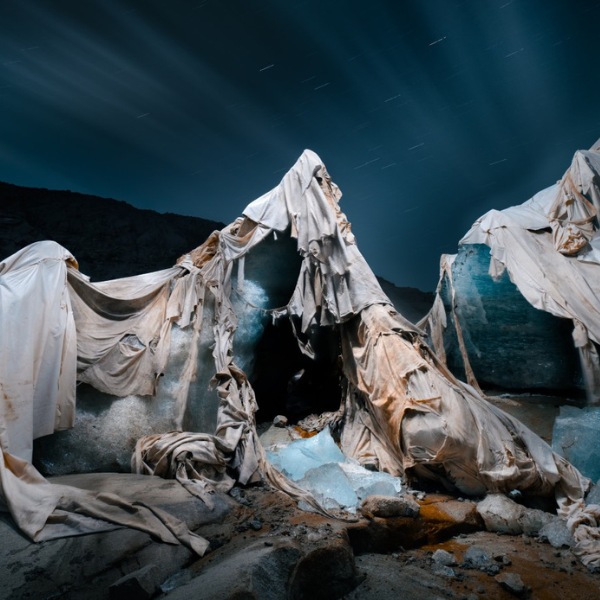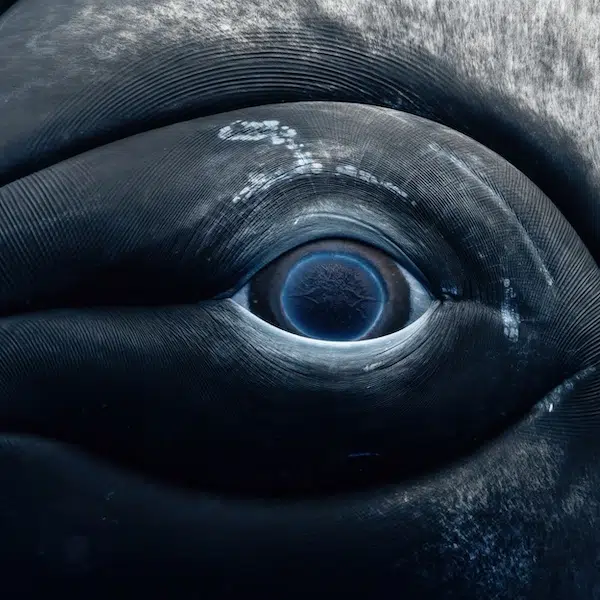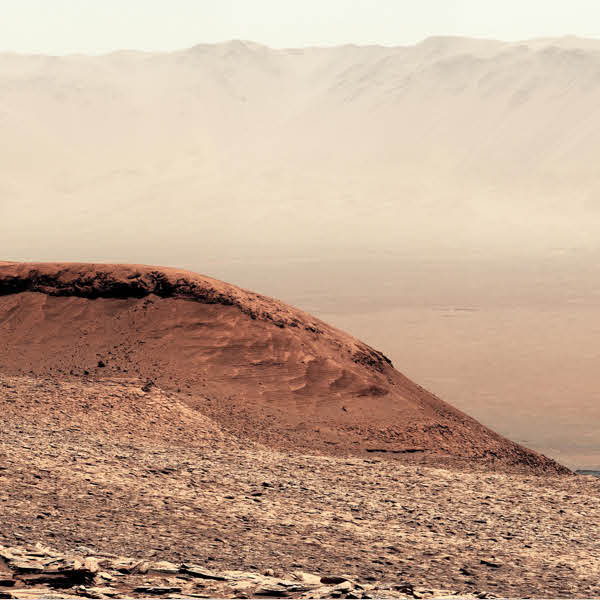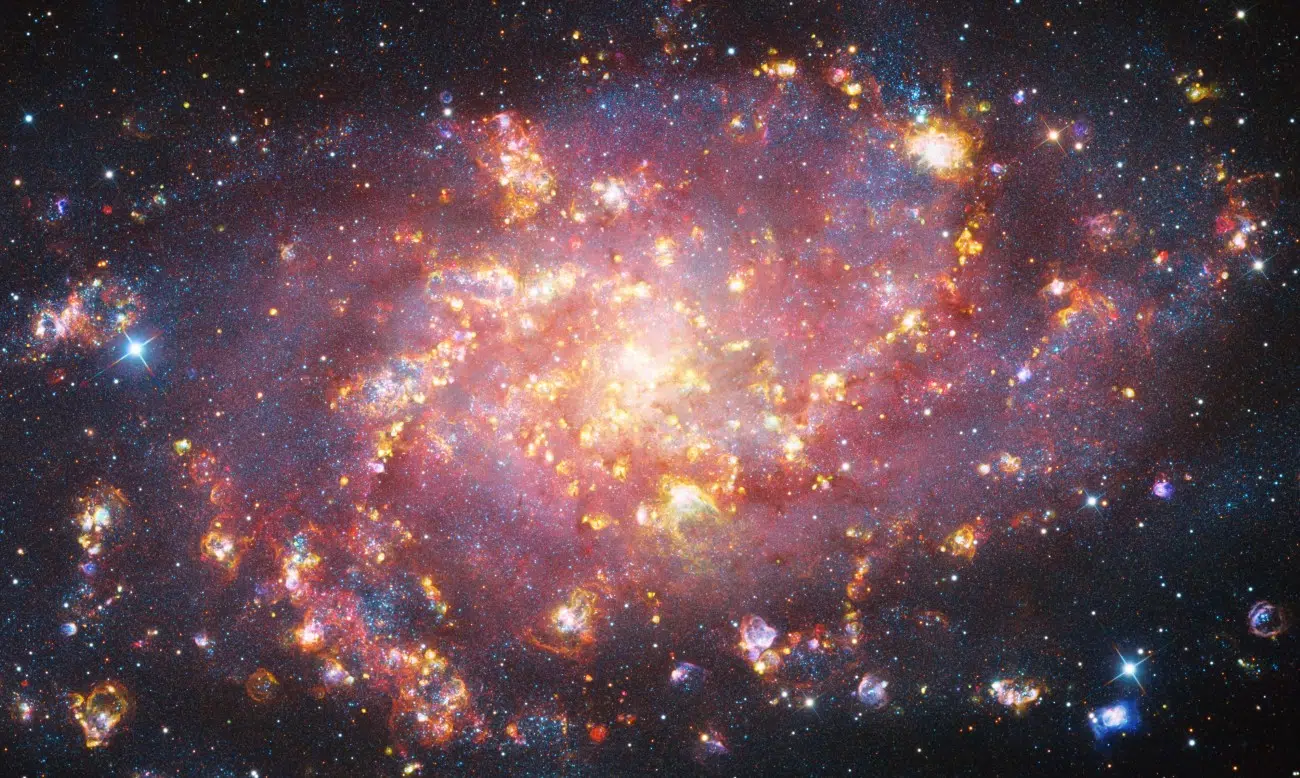
“Fireworks” by Bence Tóth, Péter Feltóti, Bertalan Kecskés
The image shows M33, the Triangulum Galaxy from a new perspective. Due to tidal interaction with M31, there is very prominent star-forming activity in M33, which results in a spectacular structure of emission nebulae. During processing, a separate SHO picture was created with a strong SII/H-alpha presence, the glowing red structures in the picture, and blended with a high-resolution LRGB processing of the continuum data, representing the ‘background’ light.
Location: Sződliget, Pest and Törökkoppány, Somogy, Hungary, 2–4, 9, 23,30 November, 1, 27 and 28 December 2024
Dazzling galaxies, colorful Northern Lights, and the fiery sun are just some of the celestial bodies and natural phenomena that made the ZWO Astronomy Photographer of the Year shortlist. Organized by Royal Observatory Greenwich, supported by ZWO and in association with BBC Sky at Night Magazine, the competition received over 5,500 entries from amateur and professional astrophotographers.
While the winners won’t be announced until September, the competition has given us a sneak peek at what we can expect by releasing its shortlist of finalists. From incredible solar prominences to solar eclipses, the images are a record of the year in astronomy. And in a new development, the annual Annie Maunder Prize for Image Innovation has been renamed. The Annie Maunder Open Category is a playground for photographers to experiment and showcase their creative approaches to astrophotography.
Now in its 17th year, the contest will once again award winners across nine categories, as well as two special prizes and an overall winner. Scroll down to see our favorite images from the 2025 shortlist and then head over to the official website to see all the finalists.
The ZWO Astronomy Photographer of the Year contest has released the shortlist of its 17th annual contest.
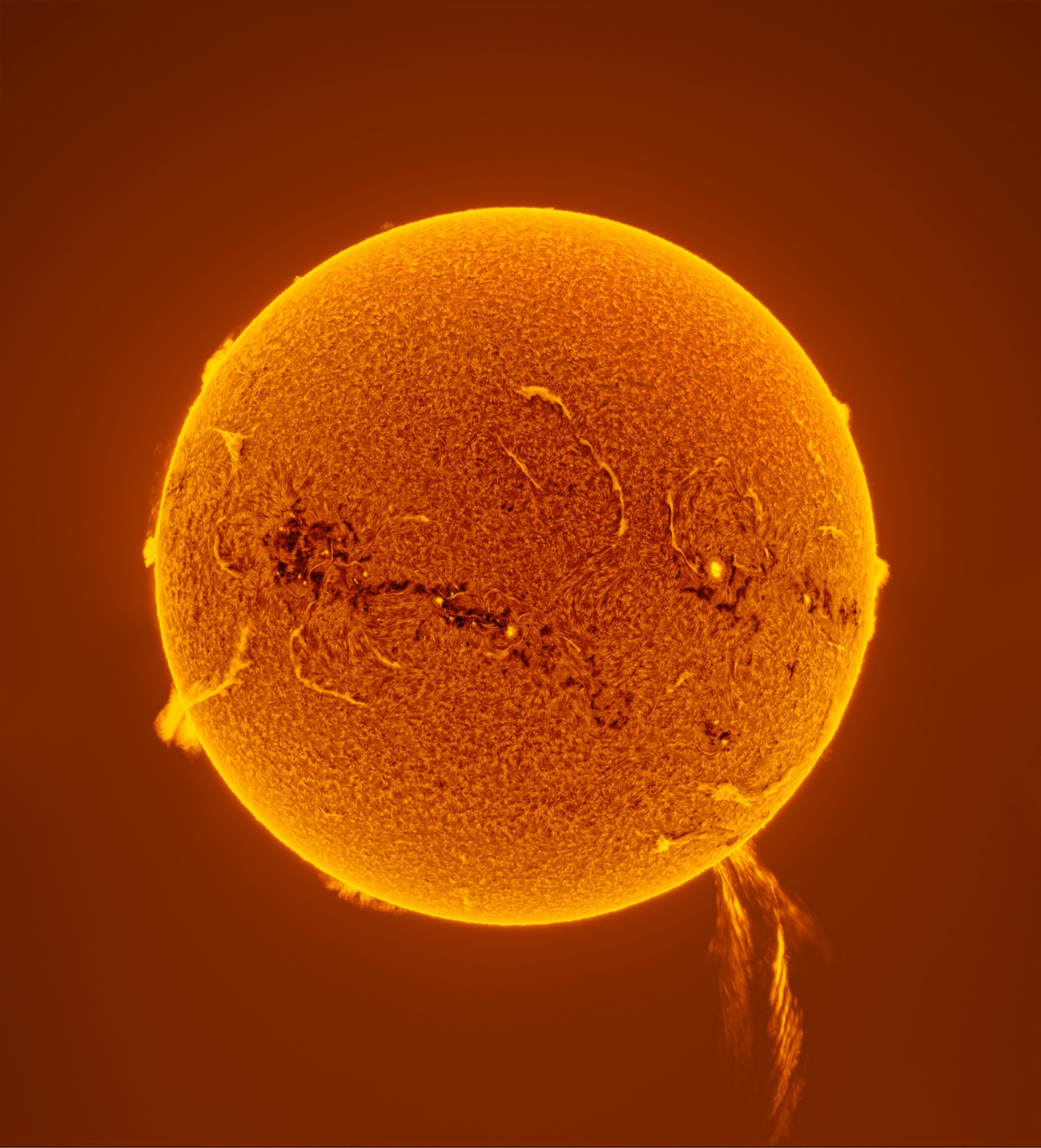
“500,000-km Solar Prominence Eruption” by PengFei Chou
On 7 November 2024, the Sun experienced a massive solar prominence eruption, with a length exceeding 500,000 km (311,000 miles). The eruption lasted approximately one hour from its initial outburst to its conclusion. The eruption phase of the prominence is composed of more than 20 stacked data sets, highlighting the entire process of this spectacular event.
Location: Eastern New District, Xinxing County, Guangdong province, China, 7 November 2024
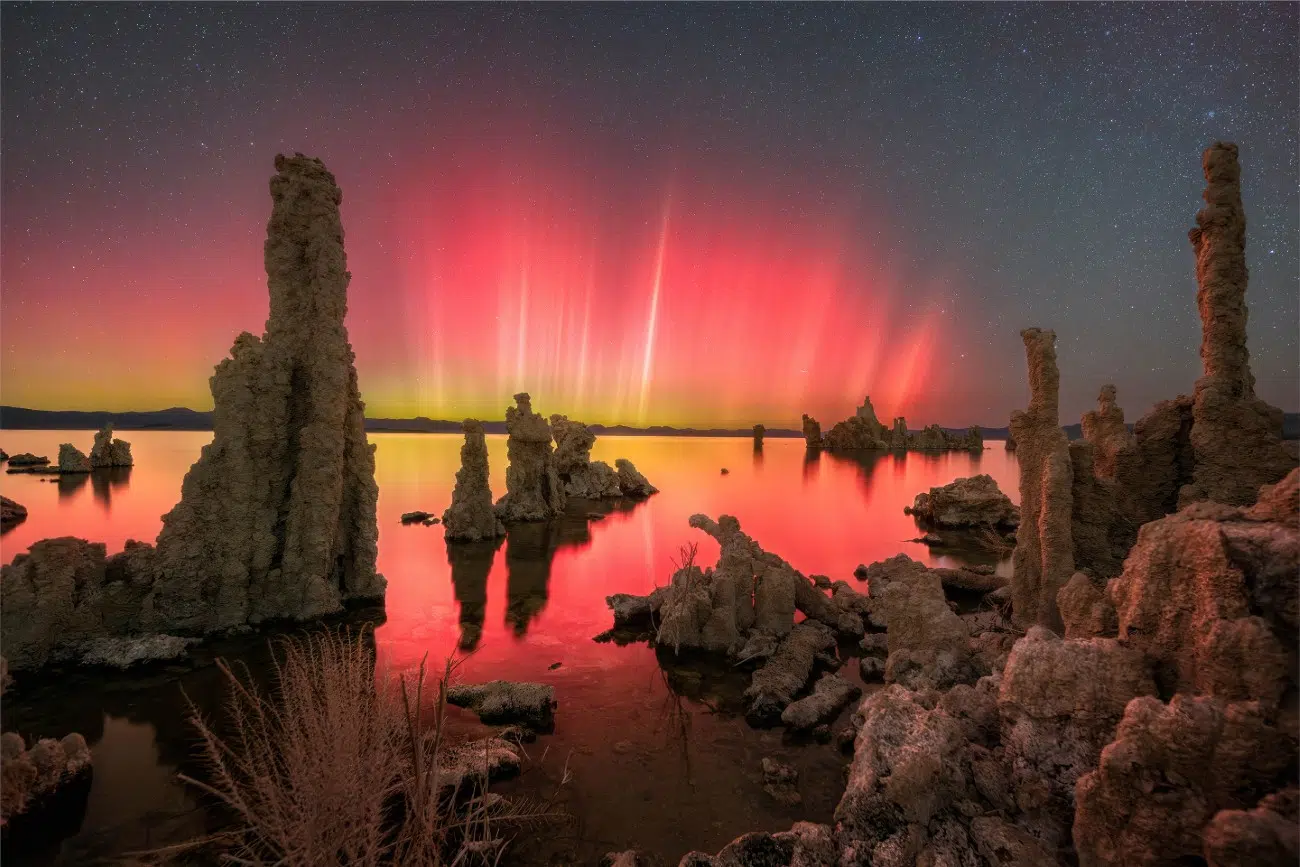
“Aurora Over Mono Lake: A Rare Dance of Light” by Daniel Zafra
This photograph captures the rare occurrence of Northern Lights in California. Vibrant ribbons of magenta and green light up the sky, reflecting in the still waters among the rock formations.
Location: US 395, Mono Lake, Mono County, USA, 10 October 2024

“Moonrise Perfection Over the Dolomites” by Fabian Dalpiaz
The full Moon rising above the rugged peaks of the Dolomites. With no clouds in sight and in flawless conditions, the golden light of sunset bathes the mountains, creating harmony between Earth and sky.
Location: Santuario di Pietralba, Deutschnofen, South Tyrol, Italy, 15 November 2024

“Solar System Portrait” by Sophie Paulin
This image presents all the planets of our Solar System, excluding Earth, showcasing their unique characteristics. Mercury, the closest to the Sun, is a barren, cratered world, while Venus is shrouded in thick clouds. Mars, the Red Planet, has vast deserts and the largest volcano in the Solar System. The gas giants, Jupiter and Saturn, dominate with their immense size and swirling storms, while Saturn’s rings make it especially striking. Uranus and Neptune, the ice giants, are rich in methane, giving them their blue hue.
Location: Bobingen, Bavaria, Germany, 11 September 2023, 7 September, 29 August, and 28 December 2024

“Eight-Panel Mosaic of M31: Stars, Nebulae and Central Bulge” by Chuhong Yu, Jingyao Hong, Xi Zhu, Yaguang Wan
This image shows countless resolved stars, emission nebulae, and a mysterious central bulge. The photo is incredibly detailed, the mist surrounding the galaxy is actually tens of thousands of yellowish tiny stars.
Location: Daocheng County, Garzê Tibetan Autonomous Prefecture, Sichuan, China, 30–31 October, 1–6, 20–30 November, 1–10 and 20–31 December 2024
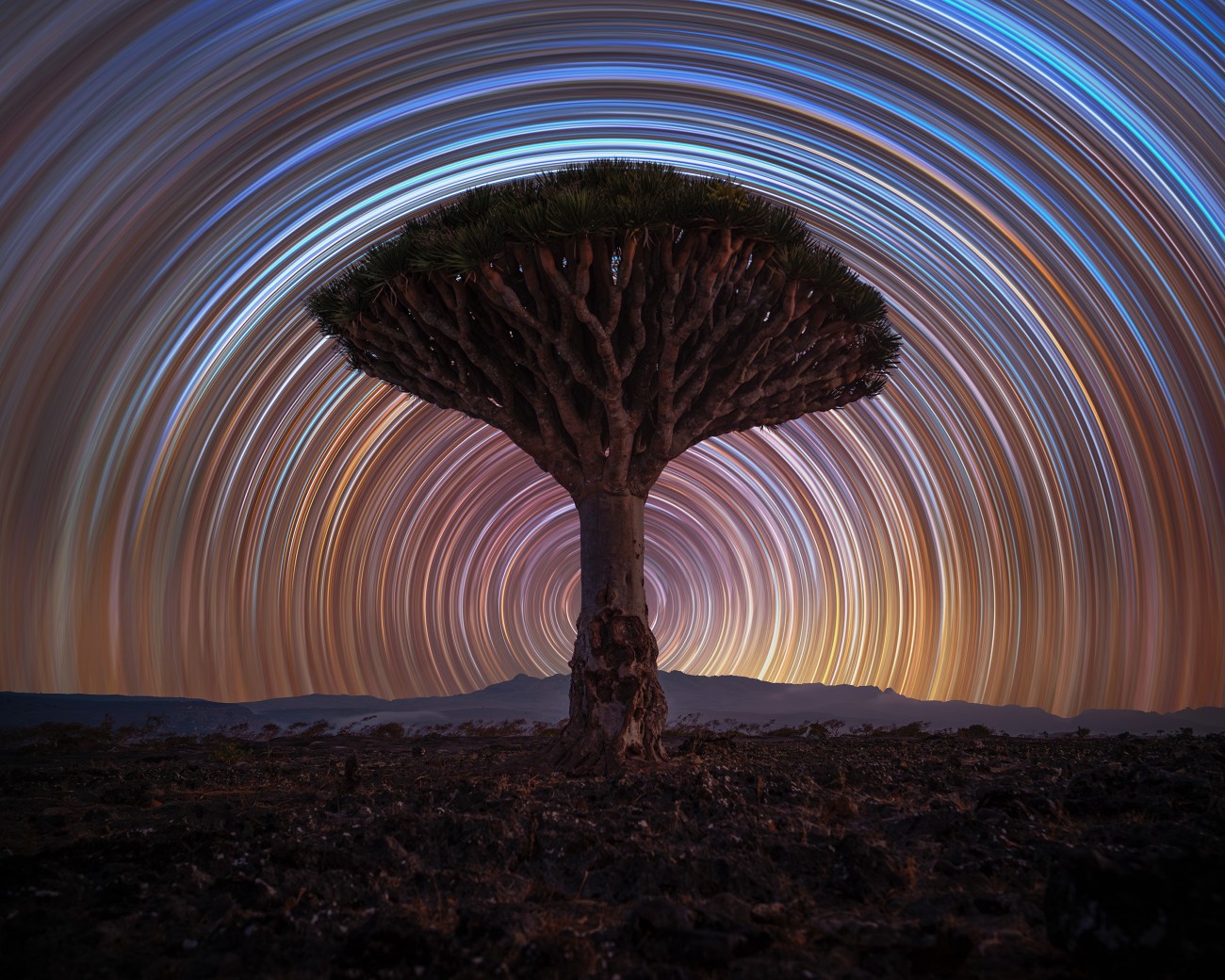
“Dragon Tree Trails” by Benjamin Barakat
A solitary dragon tree stands tall in the heart of Socotra’s Dragon Blood Tree forest – an otherworldly landscape unlike anywhere else on Earth. The final image is composed of 300 individual exposures.
Location: Firmihin Forest, Hidaybu District, Yemen, 13 March 2024
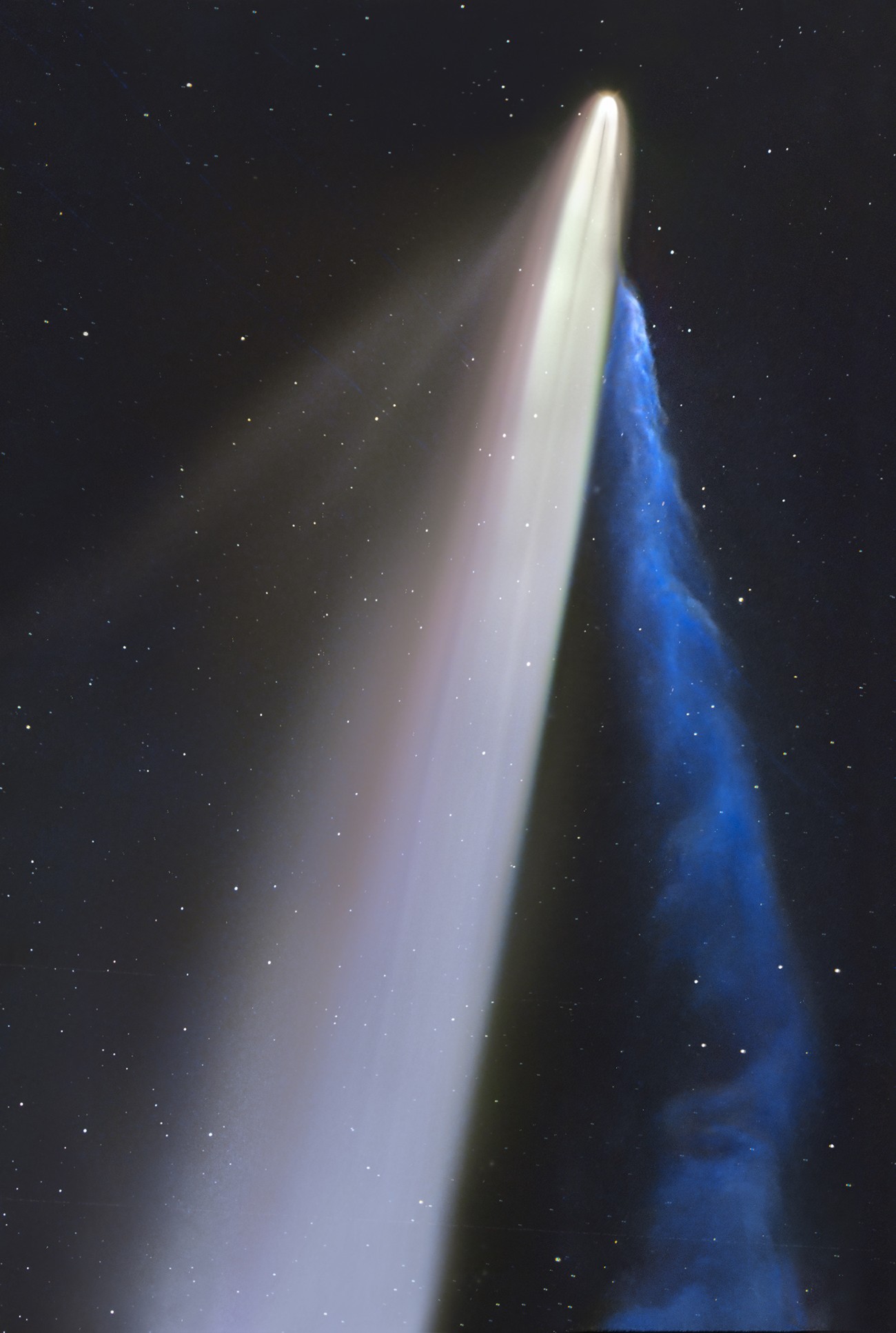
“Close-up of a Comet” by Gerald Rhemann and Michael Jäger
The photographers traveled to Namibia to view Comet C/2023 A3 (Tsuchinshan-ATLAS) in the southern hemisphere. Due to the angle of the observation, the dust and ion tails seem to have overlapped, but the impact of solar winds on the day caused noticeable kinks in the ion tail.
Location: Tivoli Astrofarm, Windhoek Rural, Namibia, 30 September 2024
The photo contest received over 5,500 entries from amateur and professional astrophotographers.
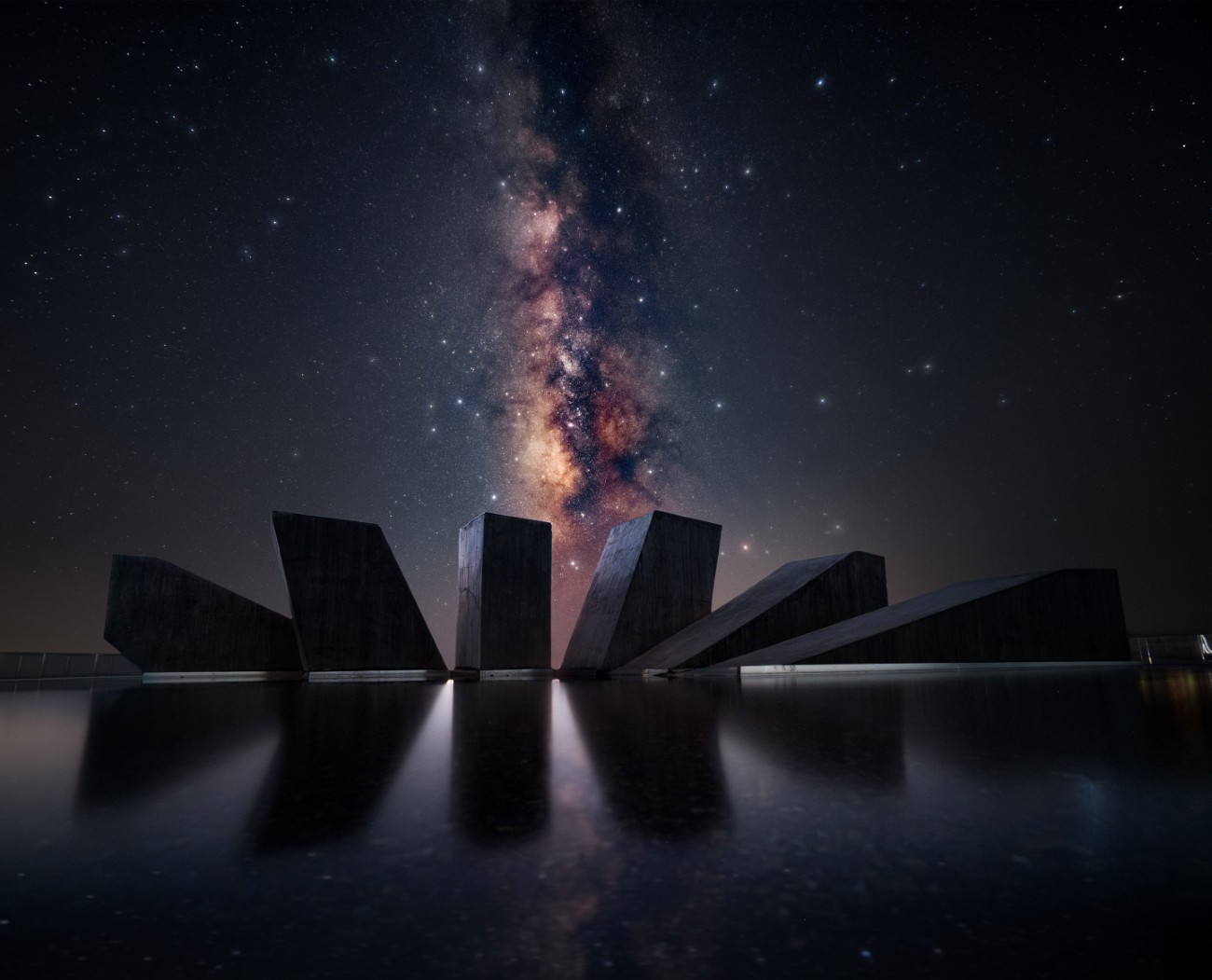
“Gateway to the Galaxy” by Yujie Zhang
Under the night sky, several black geometric buildings appear to stand on the water’s surface, resembling gateways to the galaxy. The bright Milky Way stretches across the sky behind them, with stars twinkling. The reflections of the buildings shimmer in the water, blending reality and illusion, as if opening a passage to the mysteries of the Universe, inspiring endless reverie and a longing to explore the vast starry sky.
Location: Songyang County, China, 10 August 2024
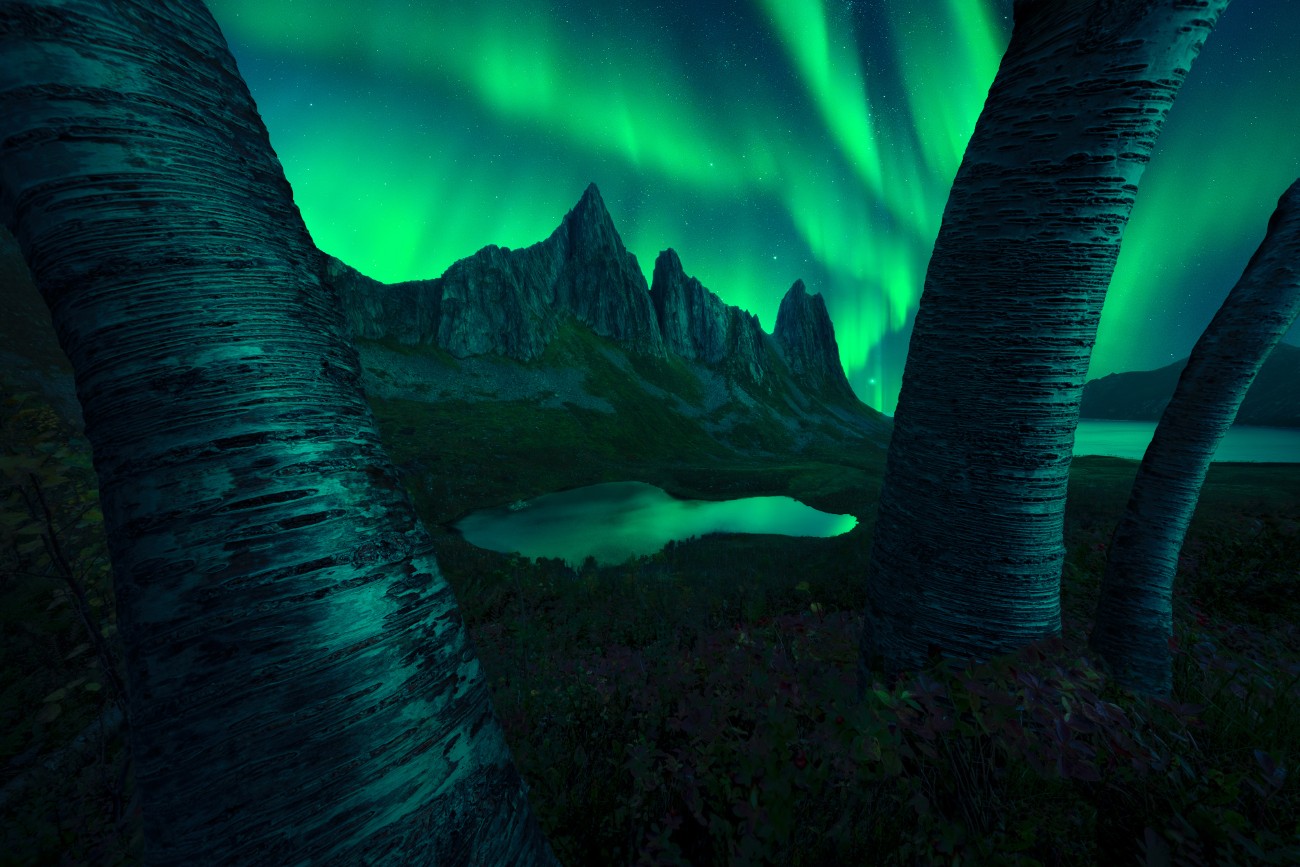
“Kongen” by Filip Hrebenda
The photograph captures a remote location on the Senja Peninsula in northern Norway. In the foreground, birch trees beautifully reflect the colors of the dancing aurora in the sky.
Location: Stavelitippen, Fjordgård, Norway, 12 September 2024
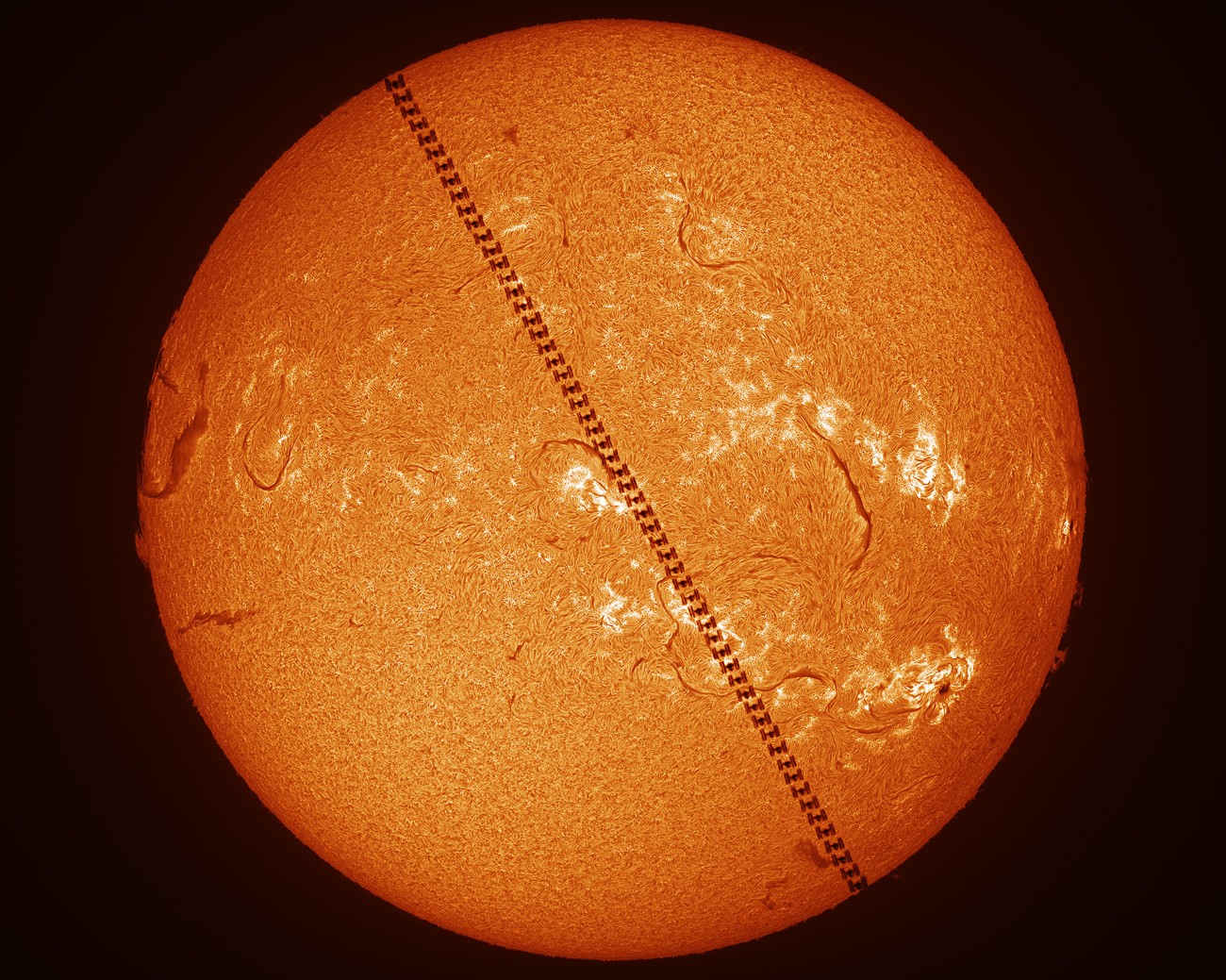
“Encounter Within One Second” by Zhang Yanguang
This image captures the International Space Station (ISS) transiting across the solar disc. The solar background was captured separately with double-stacked etalon[an optical filter that isolates specific wavelengths, used to observe solar details], and reveals high-contrast chromospheric details. The imaging sequences were strategically combined during post-processing to preserve both the spacecraft’s crisp silhouette and the Sun’s intricate surface features.
Location: Xiamen, Fujian, China, 24 January 2025

“Blood Moon Rising Behind the City Skyscrapers” by Tianyao Yang
This photograph captures a red Full Moon rising beside Shanghai’s tallest skyscrapers in Lujiazui. Taken from a distance of 26.5 km (16.5 miles) from the skyscrapers in a single exposure, this image’s alignment took five years of planning. The Full Moon appears perfectly positioned next to the illuminated skyline, creating a striking contrast.
Location: Jiading District, Shanghai, China, 21 July 2024
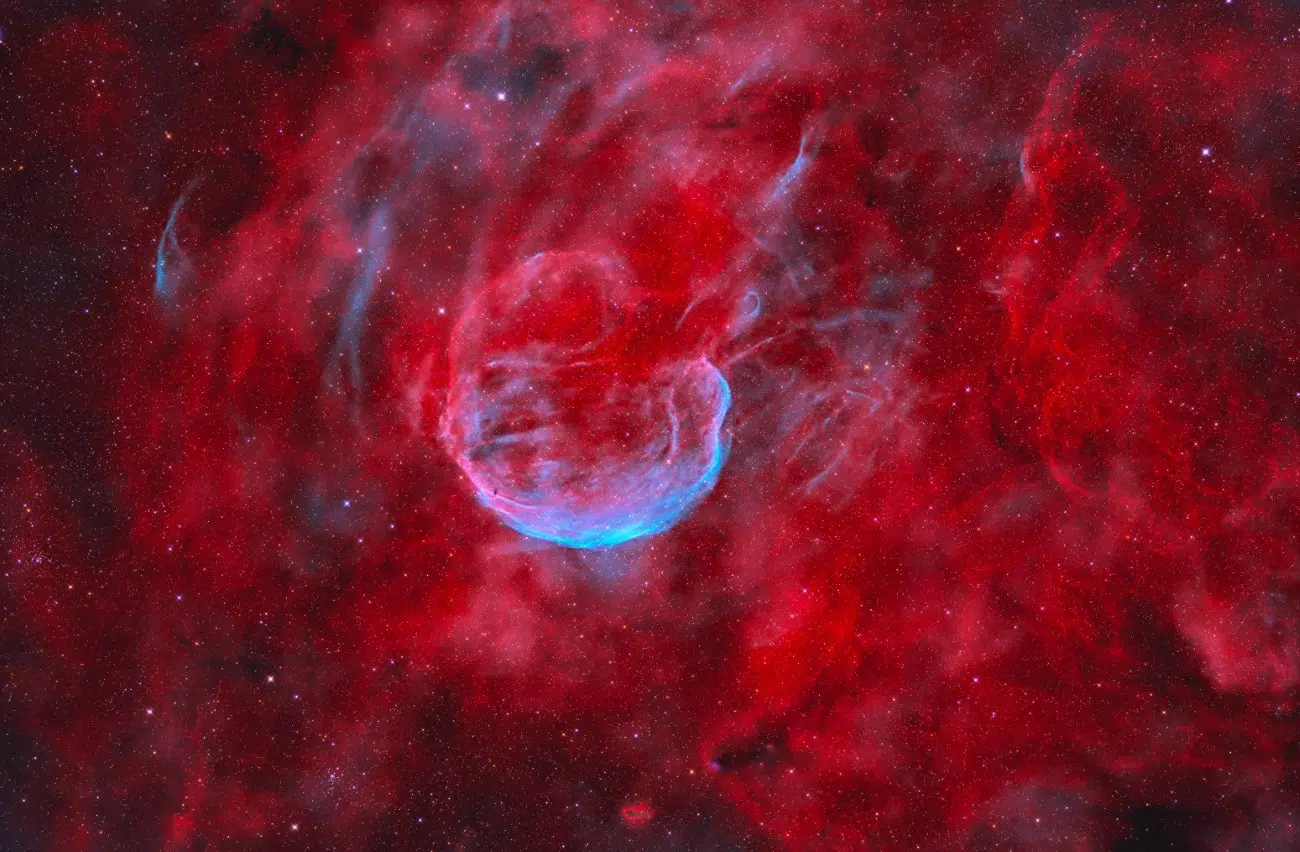
“Abell 85: Pomegranate in the Universe” by Deqian Li
Abell 85 is a supernova remnant situated in the Milky Way galaxy that appears to some to be shaped like a pomegranate. This target is faint. The OIII signal in particular is exceedingly weak. To fully capture the signal, Deqian Li spent six days camping in Hongyuan County.
Location: Hongyuan County, Ngawa Tibetan and Qiang Autonomous Prefecture, Sichuan, China, and Yingshan County, Nanchong, Sichuan, China, 30, 31 August, 1 and 3–5 September 2024
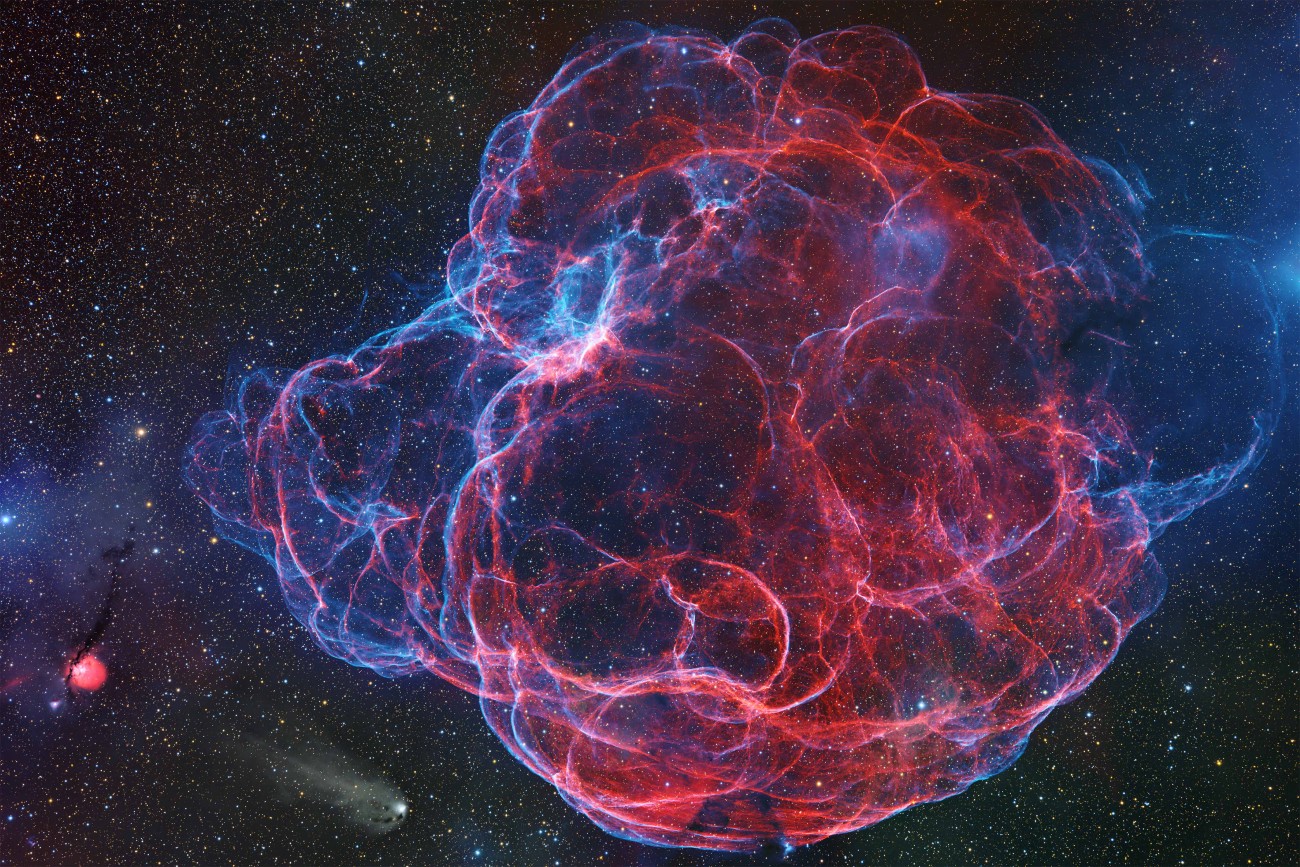
“Electric Threads of the Lightning Spaghetti Nebula” by Shaoyu Zhang
This full-spectrum image of the Spaghetti Nebula unveils the faint and elusive nature of this supernova remnant (SNR), hidden behind a vast cloud of dust that obstructs its emission light. To enhance its visual appeal, Shaoyu Zhang dedicated considerable time to capturing OIII data, intensifying the blue and green hues, while allowing SII and H-alpha to support high dynamic range stretching for added depth.
Location: Deep Sky Chile Observatory, Camino del Observatorio, Río Hurtado, Chile and Xiangcheng, Garzê Tibetan Autonomous Prefecture, Sichuan, China, 21, 24 and 25 December 2024, 3–5, 15, 16, 19–31 January, 1–6, 10–19 February 2025
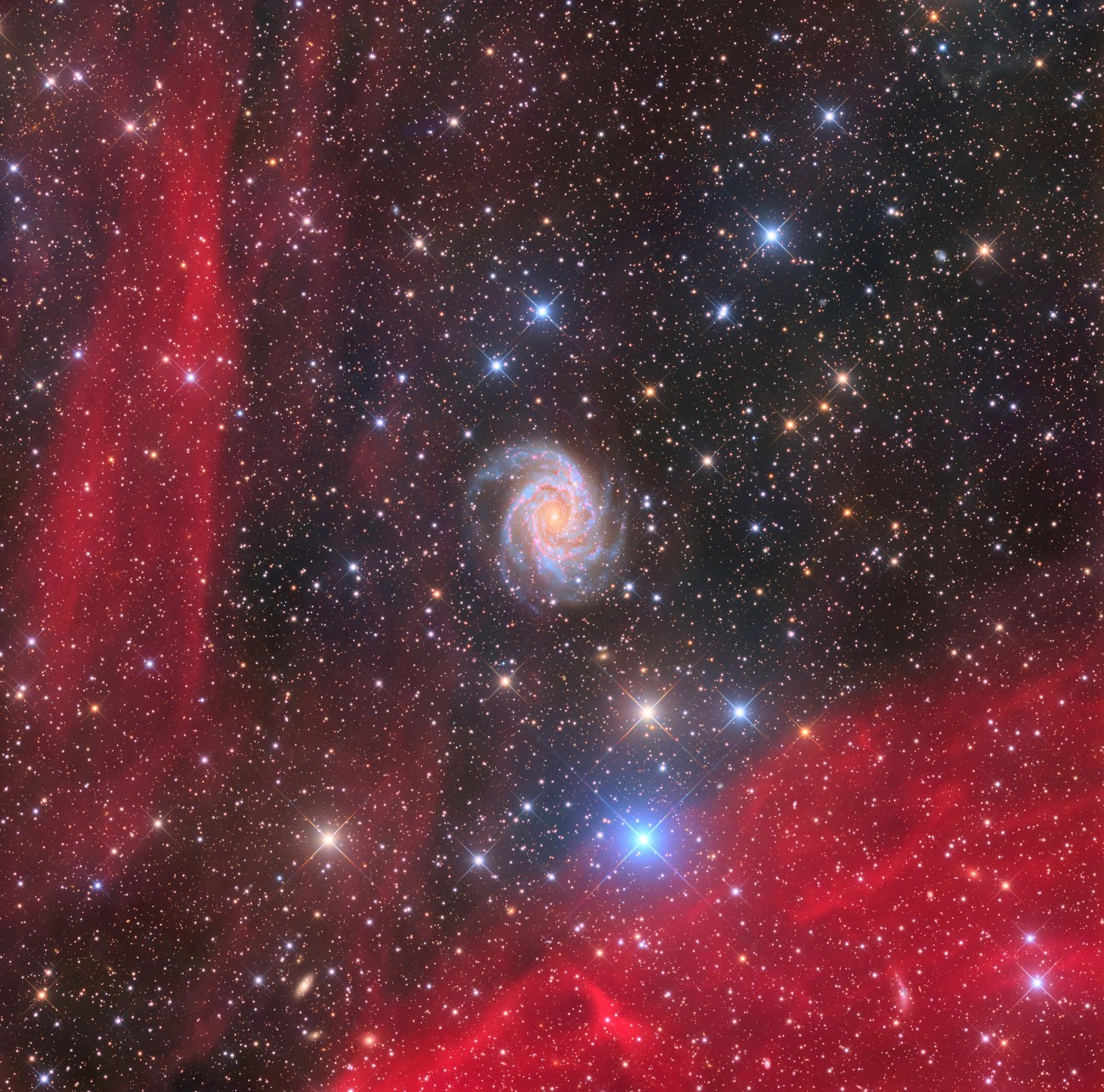
“NGC 2997: The Antlia Cabbage Galaxy” by Xinran Li
NGC 2997 is a barred spiral galaxy (type SBc) in the constellation of Antlia. At 35 million light years distance, it has a visual magnitude of about 9.5, making it visible with binoculars in dark sites. The region is full of background H-alpha emissions, giving wonderful color to the image.
Location: El Sauce Observatory, Río Hurtado, Chile, 23 January, 4–5 February 2025











